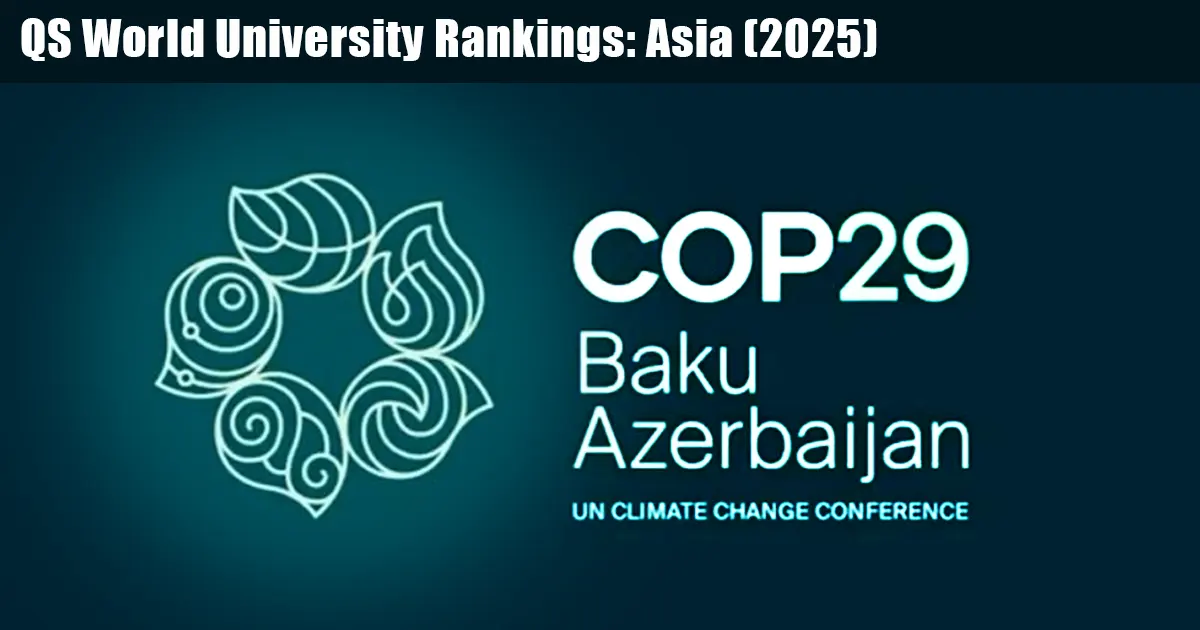
Context: The Baku Climate Summit (COP 29) is set to prioritize climate finance, marking the first dedicated focus on this issue in over a decade. The summit aims to implement financial structures to facilitate global climate action.
Key Agenda Points at COP 29
- Establishing New Climate Finance Goals
- Target: Transitioning from the existing $100 billion goal to a proposed $1 trillion annually, specifically to support climate actions in developing countries.
- Funding Sources: Primarily from wealthy nations, with emerging economies like China and India possibly contributing.
- Paris Agreement Update: Revisiting climate action targets and the New Collective Quantified Goal (NCQG) commitments by 2025.
- Climate Finance Action Fund (CFAF)
- Source: Voluntary contributions, including initial funds from fossil fuel companies and Azerbaijan.
- Allocation: 50% of funds directed to climate projects in developing countries, with the remaining 50% to support national climate action.
- Operational Conditions: Activation requires at least 10 shareholder nations and $1 billion in starting capital.
- Loss and Damage Fund
- Purpose: Financial support for vulnerable countries facing climate-related disasters.
- Current Funding: Approximately $660 million mobilized, with the fund based in the Philippines.
- Baku Focus: Expanding the fund and ensuring its sustainability.
Azerbaijan’s Key Proposals
- Energy Storage & Green Hydrogen: Increase global energy storage sixfold by 2030 and encourage green hydrogen development as a sustainable energy alternative.
- Reducing Digital Carbon Footprint: Emphasize carbon reduction in digital and data sectors.
Challenges Facing COP 29
- Differentiation in Responsibilities
- Contention Over Contributions: Debate on whether developing countries should contribute financially.
- Developing Nations’ Perspective: Argue for developed countries to lead due to their historical emissions and resource advantages.
- $100 Billion Finance Shortfall
- Unfulfilled Commitment: Developed nations have not yet delivered the promised $100 billion annually.
- Transparency and Timeliness Issues: Ambiguities in climate finance definitions and slow disbursement have led to mistrust.
- Carbon Markets and Trading Mechanisms
- Carbon Credit Trading: Proposed mechanisms to allow developed nations to fund renewable projects in developing countries for carbon credits.
- Lack of Clear Rules: Absence of standard guidelines impacts global carbon trading efforts.
- Transparency and Accountability
- Biennial Transparency Reports (BTRs): Expected from countries to demonstrate progress in climate action.
- Accountability Issues: Calls for more transparent tracking of climate finance.
India’s Position on Climate Justice and Financial Accountability
- Demand for Climate Finance: India advocates for a $1 trillion annual commitment by developed nations by 2030 to support global climate efforts.
- Historical Responsibility: Emphasizing developed countries’ historical emissions, India insists on greater responsibility for them.
- Balanced Development: Calls for sustainable development strategies that do not hinder emerging economies.
Possible U.S. Political Impact on COP 29
- Potential Disruptions: A potential U.S. policy shift, especially a withdrawal from the Paris Agreement, could weaken developed nations’ collective efforts.
- Global Consequences: Potential setbacks in securing financial commitments and maintaining a unified approach.
Expected Outcomes and Path Forward
- Formalizing Climate Finance: A primary goal is to establish binding financial commitments to support climate action.
- Equitable Responsibility Sharing: Ongoing discussions aim to balance financial responsibilities, considering historical emissions and current economic strength.
- Renewable Energy Goals: Focus on tripling global renewable energy capacity and doubling efficiency, aligning climate action with economic benefits like job creation.




